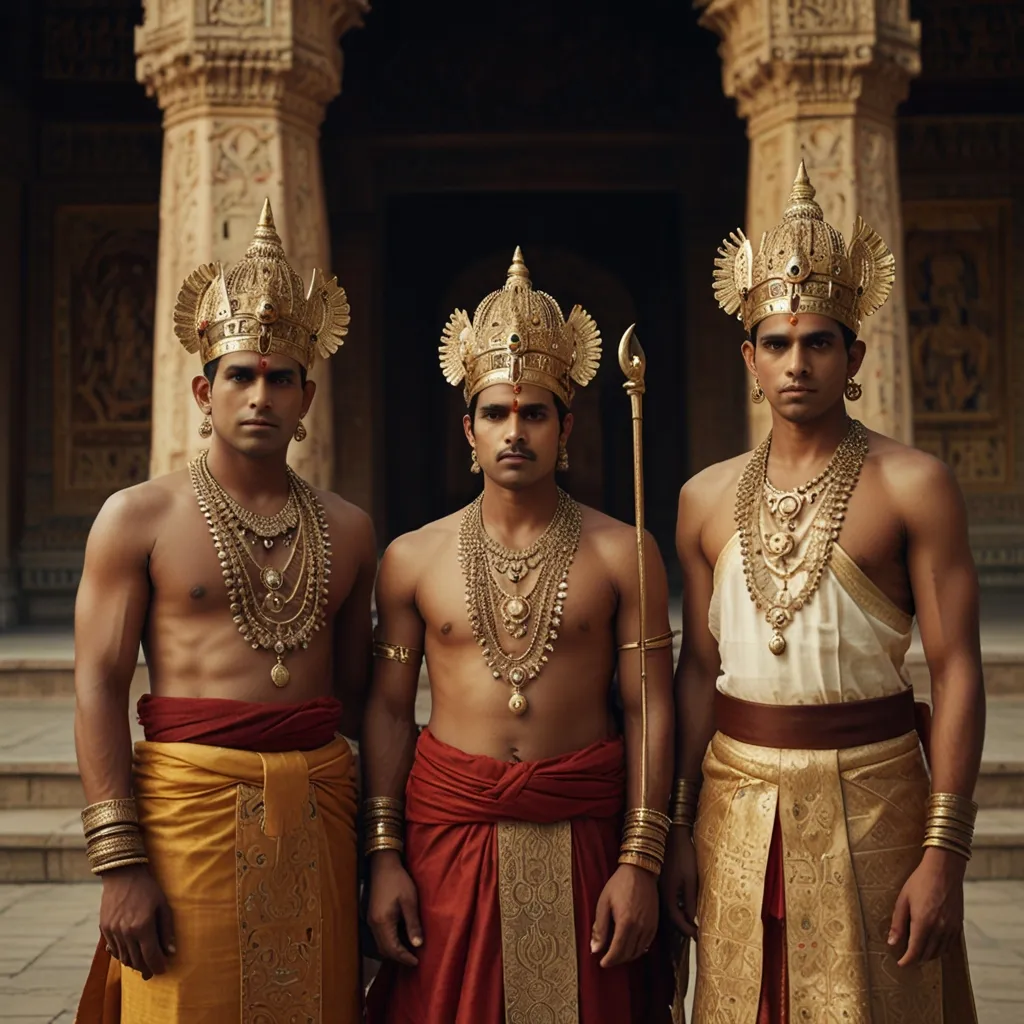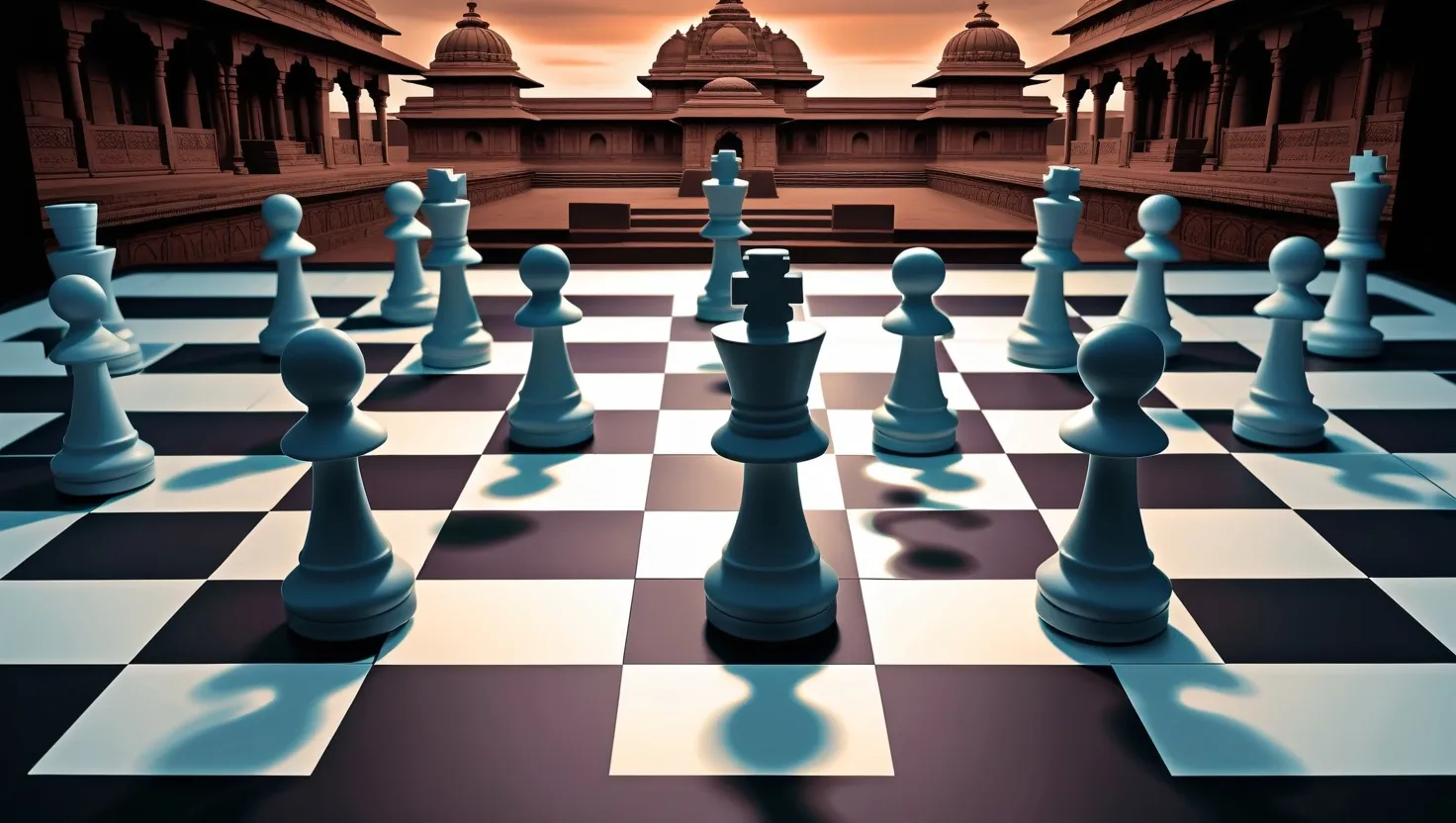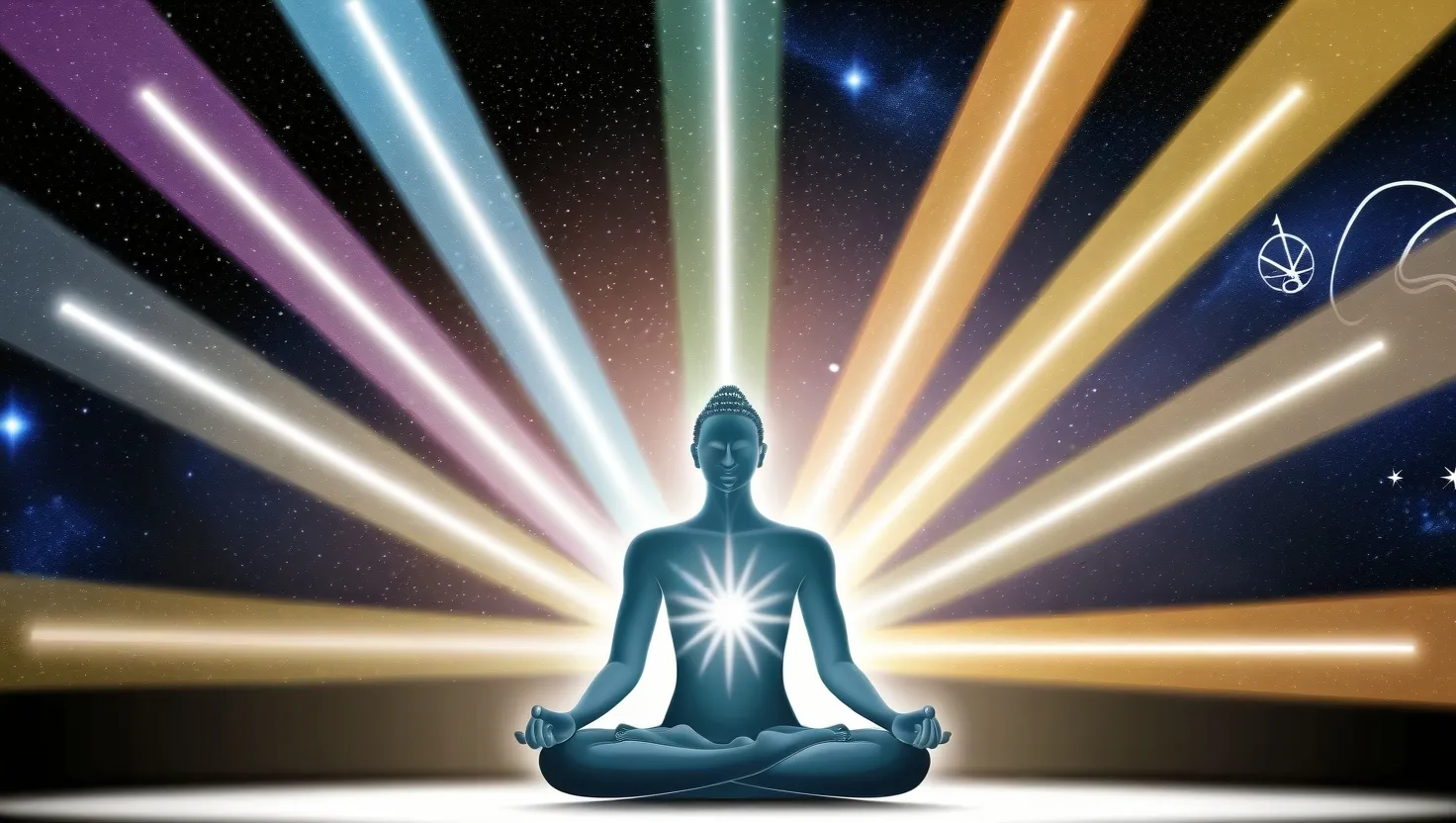In the vibrant kingdom of Hastinapura, nestled in the heart of the Kuru dynasty, a series of dramatic events unfolded that would forever shape the destiny of its people. Everything kicked off with the unexpected death of King Vichitravirya, leaving the throne in a state of chaos. With no direct heir and Bhishma, the revered elder, sidelined by his vow of celibacy, Hastinapura was on the brink of a significant crisis.
Enter Queen Satyavati, the resilient mother of the late king. Ever resourceful, she turned to her sage son, Vyasa, to ensure the continuity of the Kuru lineage. To those not in the know, Vyasa had some serious supernatural mojo. He was requested to father children with Vichitravirya’s widows, Ambika and Ambalika, through an ancient tradition called Niyoga, where a brother or close male relative could step in to sire heirs.
Ambika was up first, but Vyasa’s rough, ascetic appearance freaked her out big time. Her intense fear led her to close her eyes during their union. This fear left a mark, and true to Vyasa’s prophecy, she gave birth to a blind son, Dhritarashtra. Despite his name, which roughly translates to “a good king,” fate had different plans for Dhritarashtra. His lack of sight symbolized more than just a physical limitation; it foreshadowed a future fraught with internal blindness in decision-making.
Dhritarashtra, despite his disability, was bestowed with the strength of one hundred thousand elephants—no joke, that’s some serious muscle. This strength was a blessing from Vyasa, aware of the hurdles Dhritarashtra would encounter.
Satyavati, however, wasn’t one to give up easily. Eager for a better outcome, she urged Vyasa to try again with Ambalika. Although terrified herself, Ambalika managed to keep her eyes open, resulting in the birth of a pale but healthy boy named Pandu. His name means “white,” nodding to his pale complexion, but otherwise, he was fit as a fiddle.
Still aiming for perfection, Satyavati asked Ambalika for another attempt, but Ambalika just couldn’t face Vyasa again. Instead, she sent her fearless maid, who treated Vyasa with utmost respect. The result? A wise and sagacious boy named Vidura, sharp as a tack.
The trio of Dhritarashtra, Pandu, and Vidura grew up side by side in the grand palace of Hastinapura. Dhritarashtra, despite being blind, was trained meticulously in combat by Bhishma and Kripacharya, becoming a warrior with unmatched physical prowess. Pandu emerged as a master archer and an insightful leader. Vidura, the wisest of them all, became the kingdom’s prime minister, a role he hewed to with great skill.
The selection of an heir triggered some palace intrigue. Vidura, pragmatic and perceptive, advised that Pandu should be king, given his lack of physical limitations. Dhritarashtra, although understandably bitter, gracefully stepped aside. Yet, this concession sowed seeds of an obsession with the crown that would later haunt him.
Dhritarashtra then tied the knot with Gandhari, a princess from Gandhara, who, in a profound gesture of solidarity, chose to blindfold herself for life to share in her husband’s darkness. Together, they had a whopping one hundred sons, known as the Kauravas, and a daughter named Dushala. Dhritarashtra also had a son, Yuyutsu, with a maid named Sugadha.
Dhritarashtra’s reign was a complicated dance between righteousness and his unconditional love for his son, Duryodhana. Born under gloomy omens and against the advice of various sages, Duryodhana stayed firmly within Dhritarashtra’s protective embrace. This choice, born out of boundless paternal affection, set the stage for the epic Mahabharata war.
Throughout his rule, Dhritarashtra was torn. On one hand, he was a powerhouse of physical strength; on the other, he was a psychological mess, easily puppeteered by his cunning brother-in-law, Shakuni. Despite his numerous flaws, he strove to be a just ruler, embodying the sheer complexity of human nature.
In the twilight years of his life, after the seismic events of the Mahabharata, Dhritarashtra retired from Hastinapura. Accompanied by Gandhari, Kunti, and Vidura, he embarked on a journey of penance. Legend has it that they perished together in a forest fire, ultimately achieving moksha, a spiritual release from the cycle of life and death.
Dhritarashtra’s narrative serves as a mirror to the human condition—an intricate dance of strength and vulnerability, light and dark. His life story, rich with moral dilemmas and unwavering paternal love, continues to illuminate the importance of duty, righteousness, and the ever-present struggle to balance personal desires with ethical obligations. His legacy, woven into the fabric of the epic tales of the Mahabharata, offers timeless lessons for us all, making him a character of perpetual reflection and fascination.






